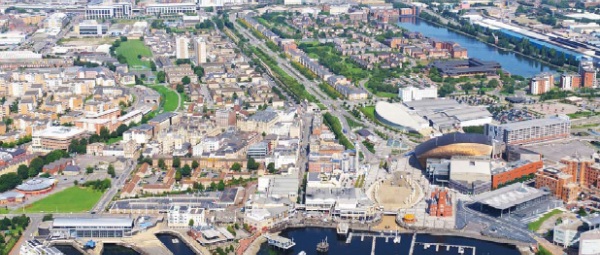Cardiff, UK

Cities are facing significant challenges and a key part of this is how they deal with the current, and future, demand for energy. Ensuring that Cardiff has access to affordable, sustainable and secure energy is crucial to ensuring service delivery, business competitiveness and long term quality of life.
There are a number of potential opportunities for Cardiff to localise and diversify sources of clean energy creation. Investing in the right projects offers an opportunity to deliver a number of benefits for businesses, communities and service delivery partners. Crucially, it will allow the city to safeguard the supply of energy, address rising costs and make a significant contribution to the vision of establishing Cardiff as Europe’s most liveable capital. To do this, the city must fully explore the potential for energy generation, identify the opportunities and challenges relating to infrastructure and investment and develop a clear business case to inform the next steps.
A modern city must look at energy if it is to develop as a place where people want to live and work. Energy is essential because energy growth is directly linked to well-being and prosperity across the globe. Meeting the growing demand for energy in a safe and environmentally responsible manner is therefore a key challenge. A continued dependence on fossil fuels and energy imported from overseas will mean no local control over price, the means of production will not be environmentally friendly and the city will be particularly vulnerable to disruptions in supply. There is therefore a clear need to address energy in Cardiff.
By producing more of the energy needed locally in a sustainable way, Cardiff can become increasingly self-reliant, and therefore resilient. Cardiff Council is currently addressing this issue by the installation of renewable energy through schemes like the Energy from Waste Plant, Lamby Way solar farm (5MW), Radyr Weir Hydro (400kW) and other building mounted solar schemes.
Cardiff also faces a significant growth challenge. The Local Development Plan (LDP) identifies the need for new dwellings by 2026, which means an increase of circa 30,000 homes between now and then. Meeting these requirements presents an opportunity to work with and alongside developers to deliver more sustainable homes. This could, for example, include passive housing fabrics to reduce energy demands and localised energy production from renewable sources such as solar, ground heat, air pumps, and independent or linked district heating schemes. Taken together this would allow Cardiff to accommodate growth in a truly sustainable way.